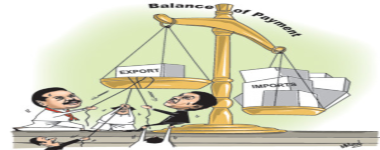by Philip Pilkington
One thing that I notice on the blogs is that I don’t think I have ever seen anyone give a clear description of the external trade account of a country. Nor have I seen anyone give a clear explanation of what determines the value of a given currency. Now, I am sure that you can find some mainstream garbage where the external account always tends toward equilibrium and so forth. But that is obviously useless nonsense and anyone who has ever looked at the trade balances of countries and the currencies of those countries knows it.

Â
Basically the mainstream theory states that if there is a trade deficit in a country two things will happen. First of all, interest rates will rise as the money supply contracts due to money ‘flowing out of the country’. Secondly, the value of the currency will fall in value as the domestic currency saturates foreign exchange markets. A combination of these two dynamics will reestablish equilibrium on the external account. The rise in interest rates will cause investment, GDP and, hence, imports to contract. While the fall in the value of the currency will decrease imports and increase exports.
There is so much wrong with this presentation that it would take a blog post in its own right to pick all the necessary holes in it. The most obvious error is the idea that interest rates would rise when these are obviously set by the central bank. In addition to this currency depreciations will not always correct the trade balance and trade imbalances will not always lead to currency depreciations. I could go on. I won’t.
Anyway, here I more so want to lay out a clear explanation of the external account and, in doing so, describe what determines the value of the currency in a floating exchange rate system like we have today. In fact, I do not need to do much of the heavy lifting here because G.L.S. Shackle has one of the clearest explanations of the external account that I have come across in his book Economics for Pleasure.

